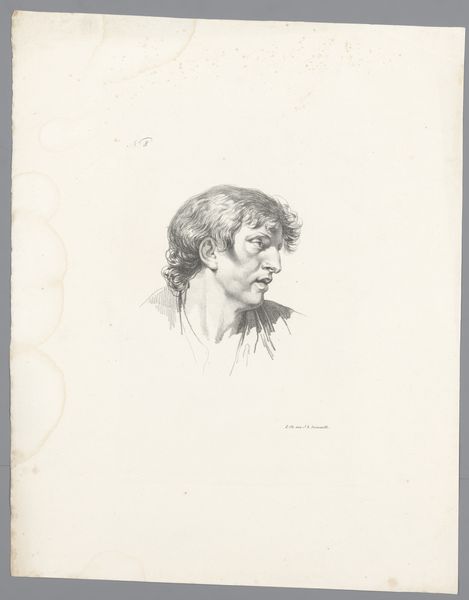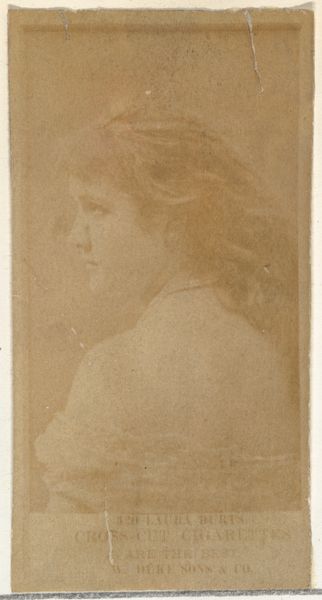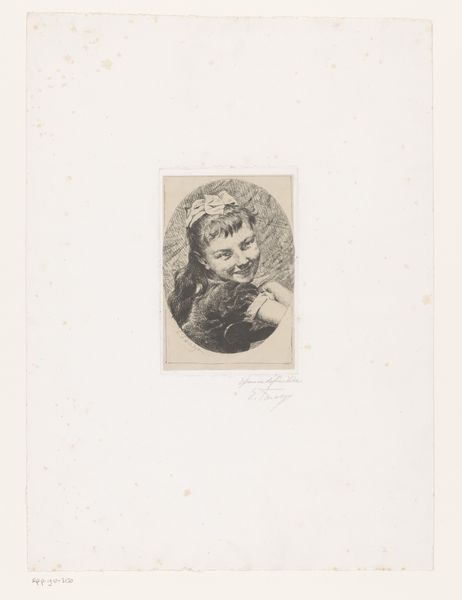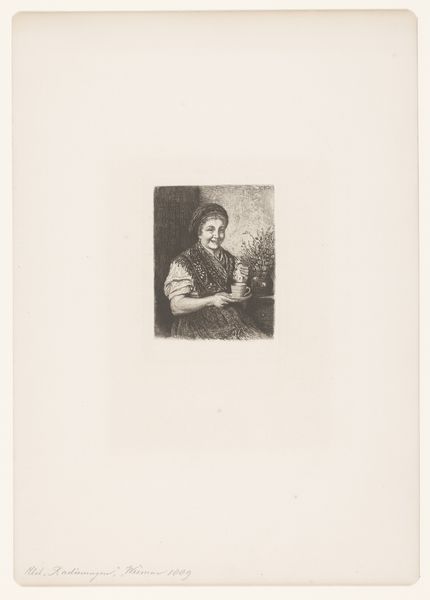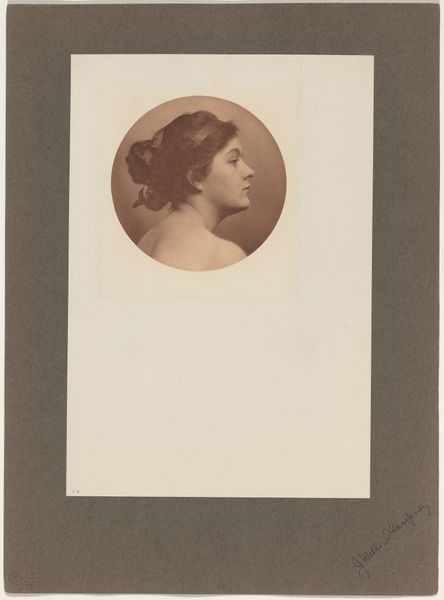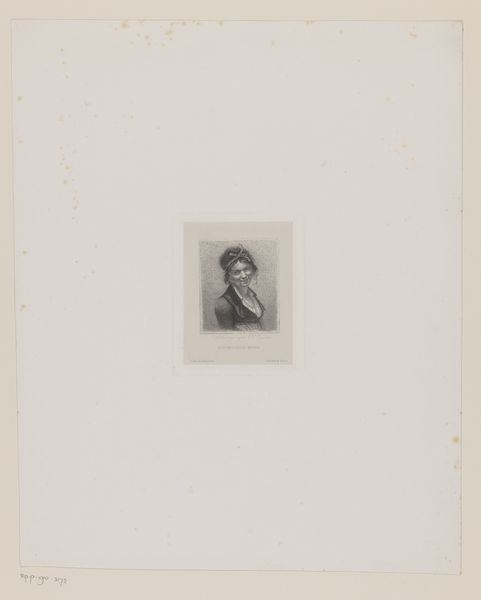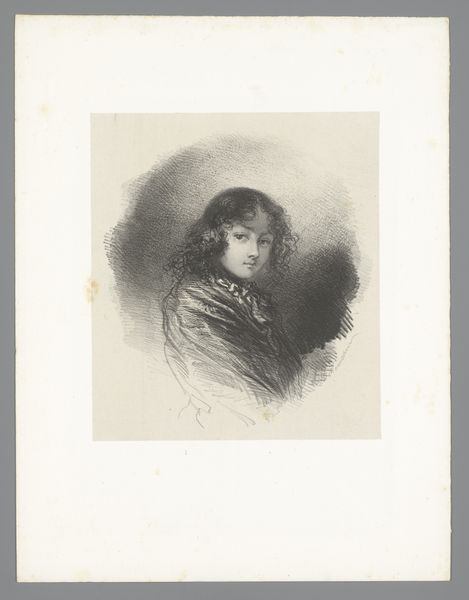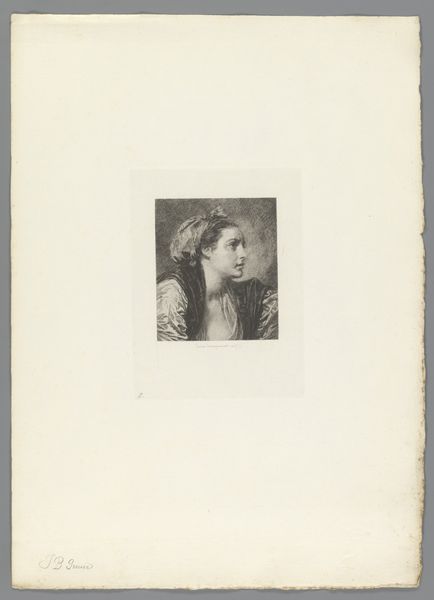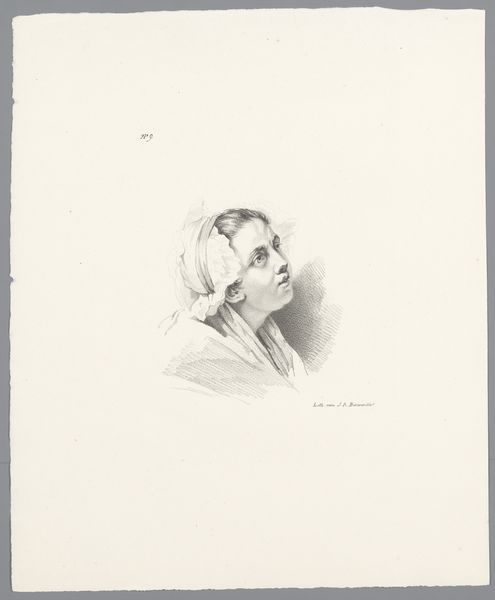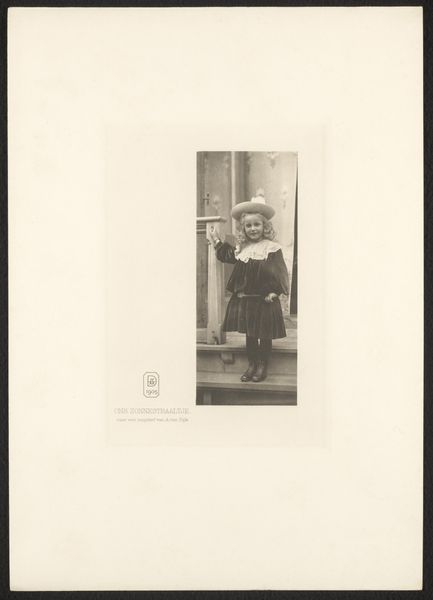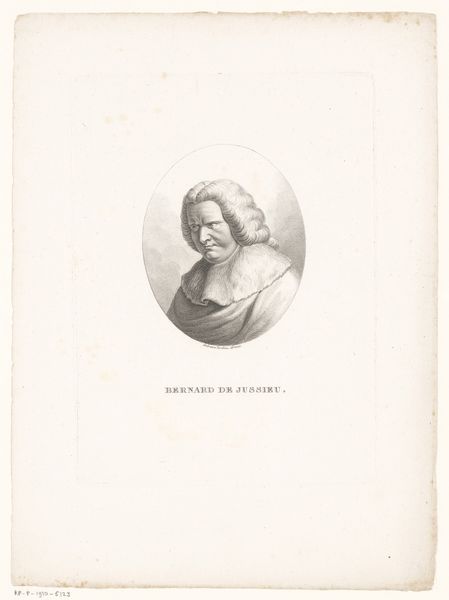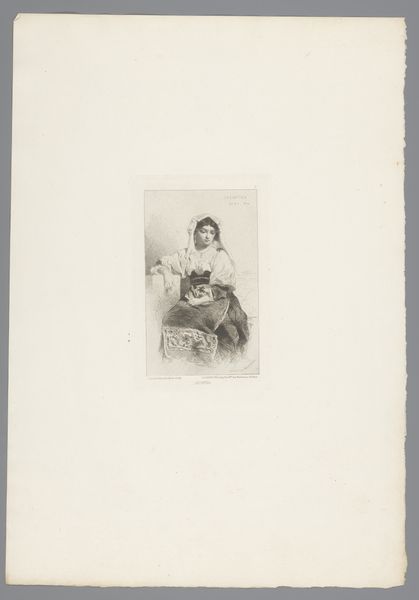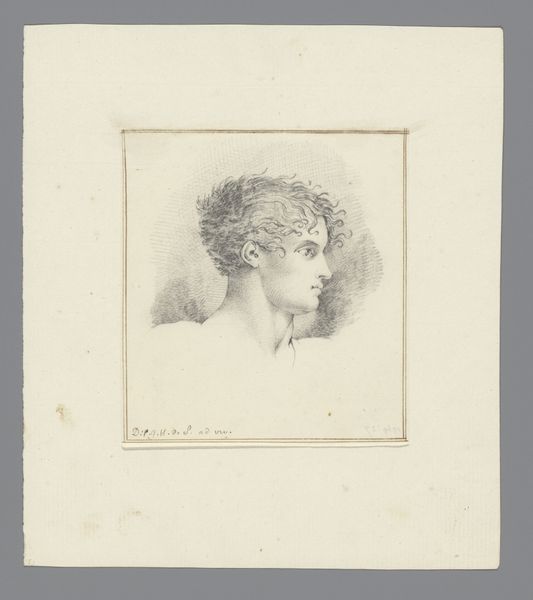
drawing, pencil
#
portrait
#
pencil drawn
#
drawing
#
pencil sketch
#
figuration
#
romanticism
#
pencil
Dimensions: height 300 mm, width 245 mm
Copyright: Rijks Museum: Open Domain
Curator: Welcome. Let’s turn our attention to "Glimlachend meisje," or "Smiling Girl," a pencil drawing created between 1820 and 1830 by Jean Augustin Daiwaille. Editor: Well, first off, she has a very secretive Mona Lisa kind of smile, doesn’t she? Something very intimate. It's as though we're intruding on her private world. And it's surprisingly modern for a drawing from the 1820s. Curator: Indeed. Daiwaille was working within the Romantic style. It aimed to capture emotion and inner states, with an almost photographic realism considering its creation predates the photographic process by some years. Her coy smile definitely conveys the era’s new psychological interests. Editor: And that gaze... it hints at both innocence and a knowing intelligence, which is fascinating. The loose lines contribute to that. I find pencil drawings inherently vulnerable. There's nowhere to hide. Every mark is laid bare, especially the artist’s confidence, or lack of. What do you see reflected here? Curator: I find myself drawn to her almost ethereal quality, how Daiwaille creates depth with such sparse, delicate strokes. But the cultural resonance here involves idealization – this vision of youthful beauty, virtue, and perhaps a touch of naiveté. Notice her high, unblemished forehead. It mirrors an enduring European ideal. Editor: Ah, idealization. You see symbolism; I see personality breaking through, like sun through the clouds. Despite the formal conventions of the time, that little quirk in her smile just seems to evade easy categorization, don't you think? I want to invent a narrative for her. She isn’t simply some artwork; she is the beginning of a beautiful tale waiting to happen. Curator: Art holds an endless set of doors and the ability to perceive how they were opened depends entirely on where and when one stands. Editor: Precisely. It's that unique invitation, offered in such exquisite form, that continues to fascinate, century after century.
Comments
No comments
Be the first to comment and join the conversation on the ultimate creative platform.
